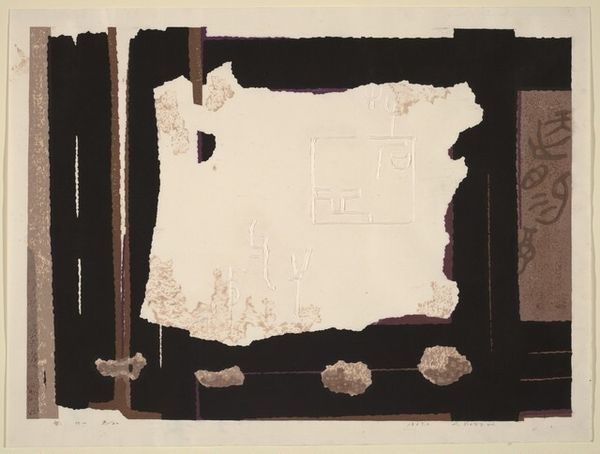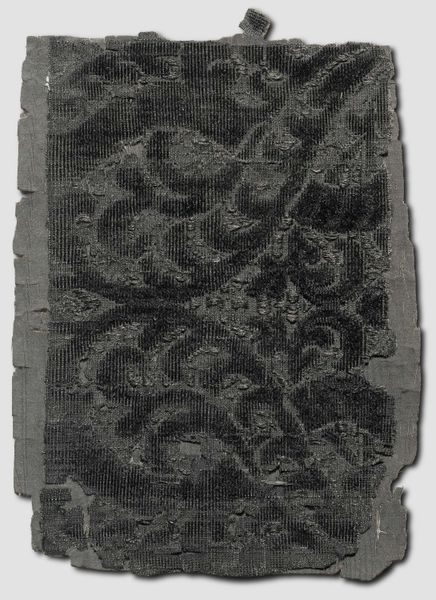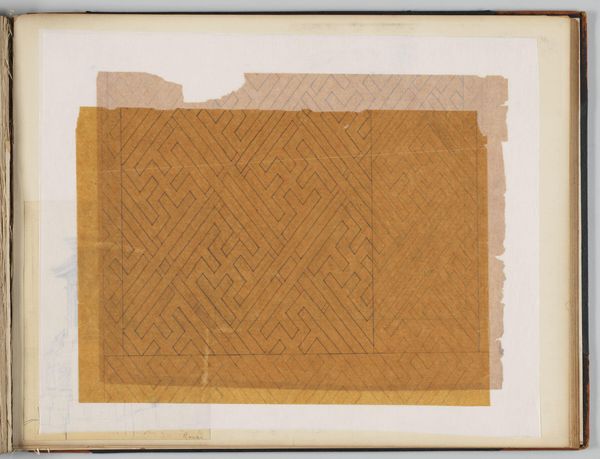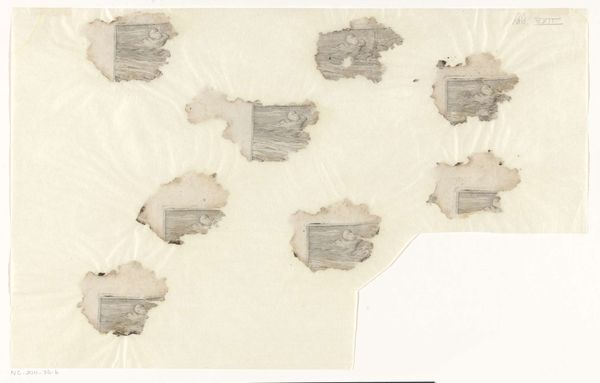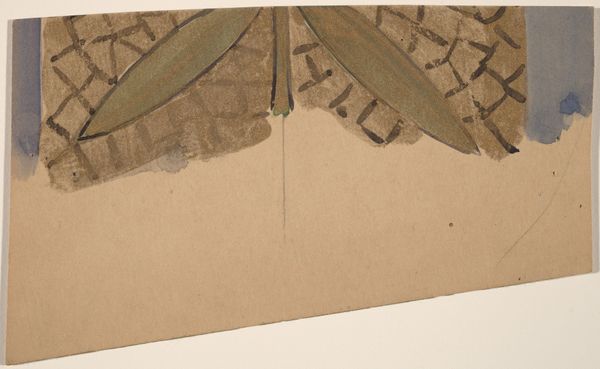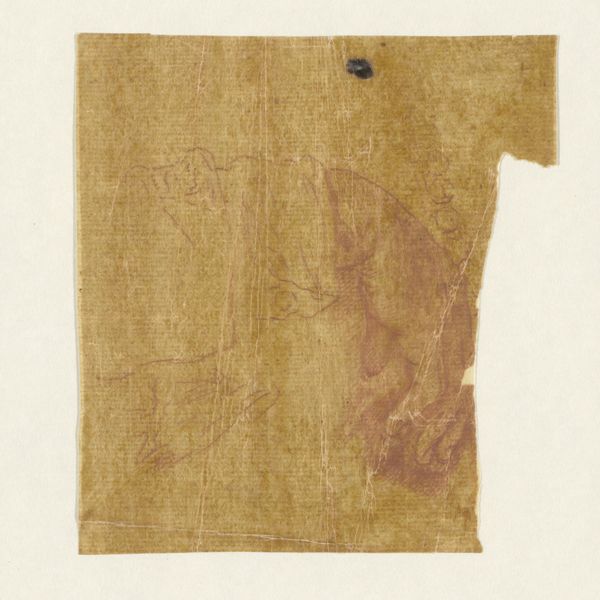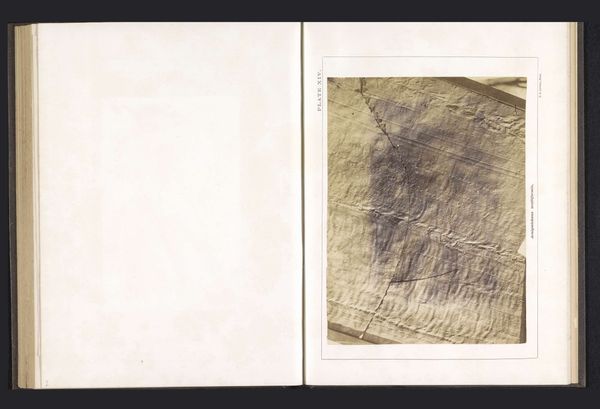
Fragment van een mantel van ciseléfluweel met kloskant, volgens overlevering afkomstig van Hugo de Groot c. 17th century
0:00
0:00
anonymous
Rijksmuseum
mixed-media, textile
#
mixed-media
#
baroque
#
textile
#
mixed medium
#
mixed media
Dimensions: height 32 cm, width 21 cm
Copyright: Rijks Museum: Open Domain
This fragment of ciselé velvet with bobbin lace, of unknown date and authorship, may have once belonged to Hugo de Groot. The claim connects the fragment to the story of de Groot's escape from Loevestein Castle in a book chest in 1621. But how can a historian make sense of a fragment? Textiles like this tell a story of global trade networks and the skilled labor that produced luxury goods in the Dutch Golden Age. Sumptuous fabrics, like this velvet, were potent symbols of wealth and status, yet their appeal also lay in the intricate designs woven into the cloth, reflecting the artistic sensibilities of the time. To understand the fragment fully, a historian would want to know the textile production methods, the provenance of the materials, the sumptuary laws that governed who could wear such fabrics, and the symbolic meanings associated with the patterns and colors. Each thread holds a potential story that, once unraveled, can reveal the social, economic, and cultural landscape of the past.
Comments
No comments
Be the first to comment and join the conversation on the ultimate creative platform.




